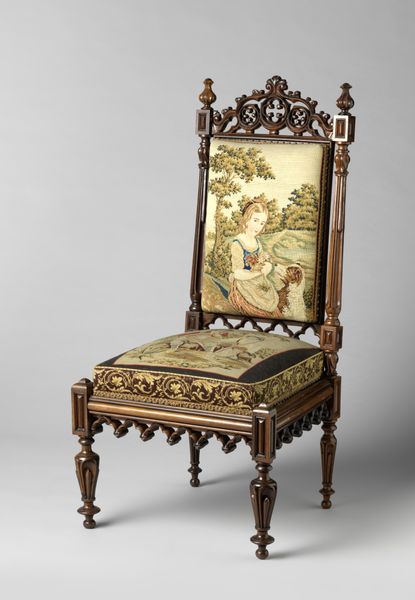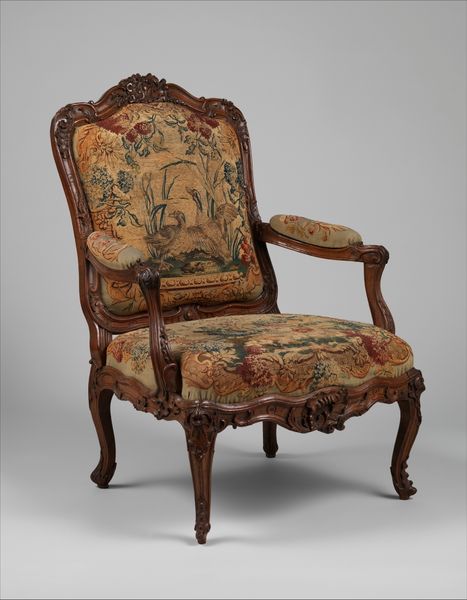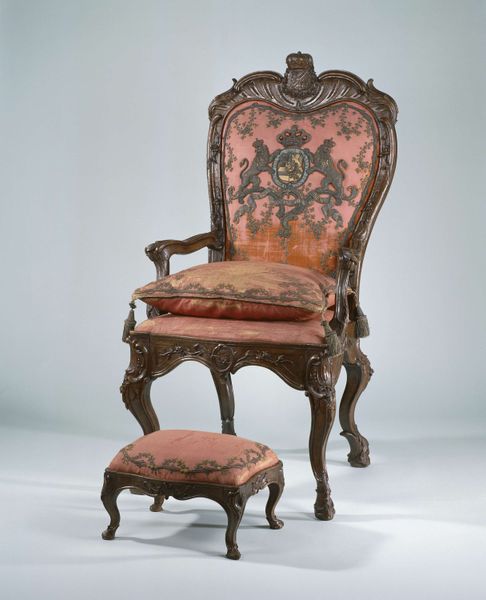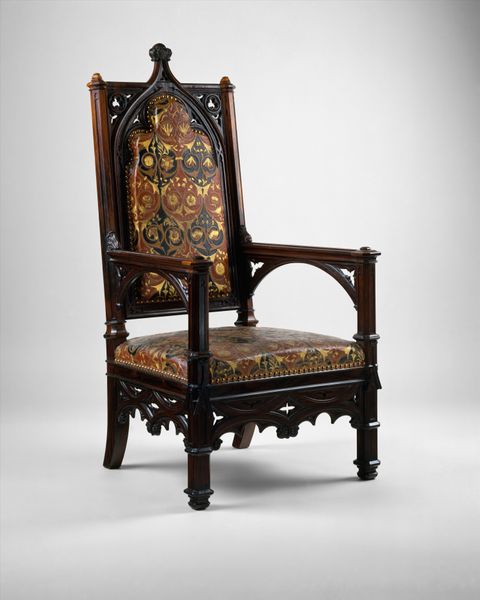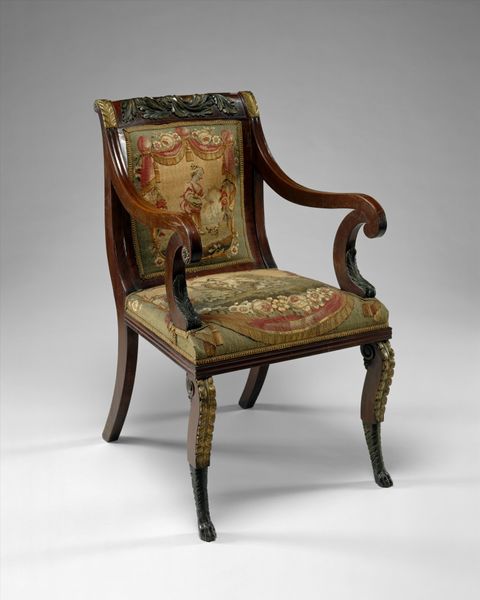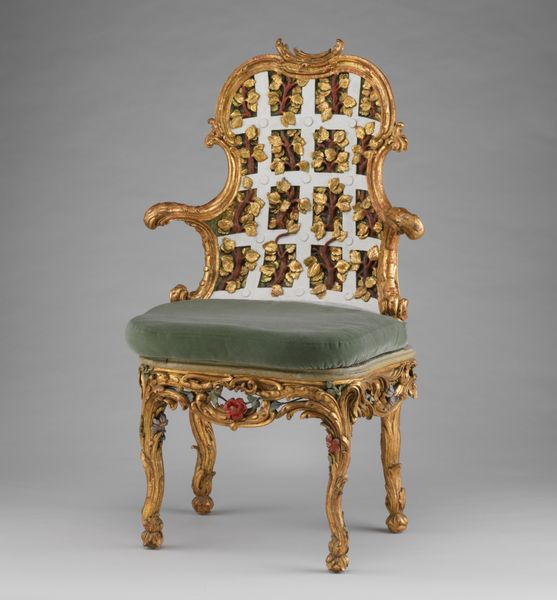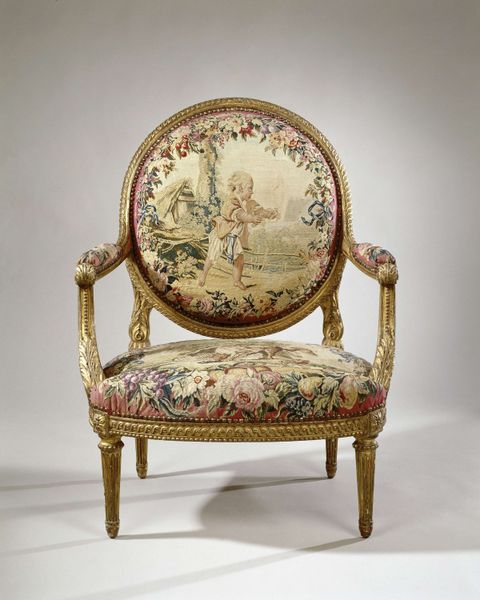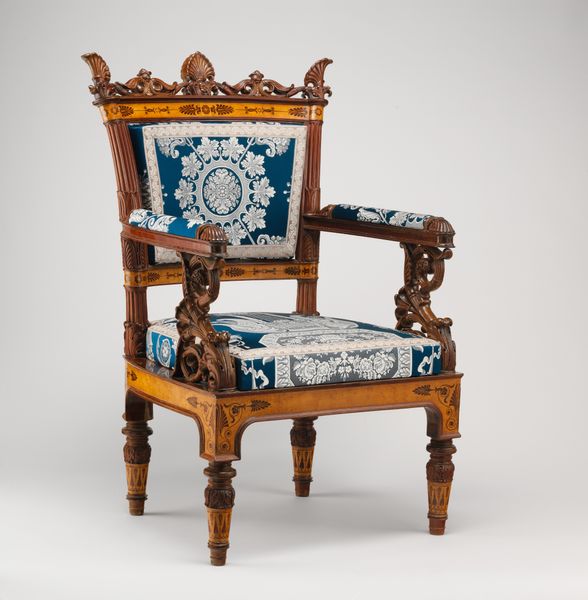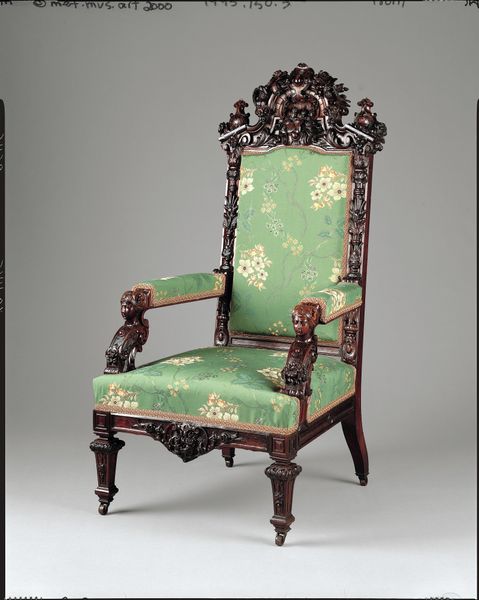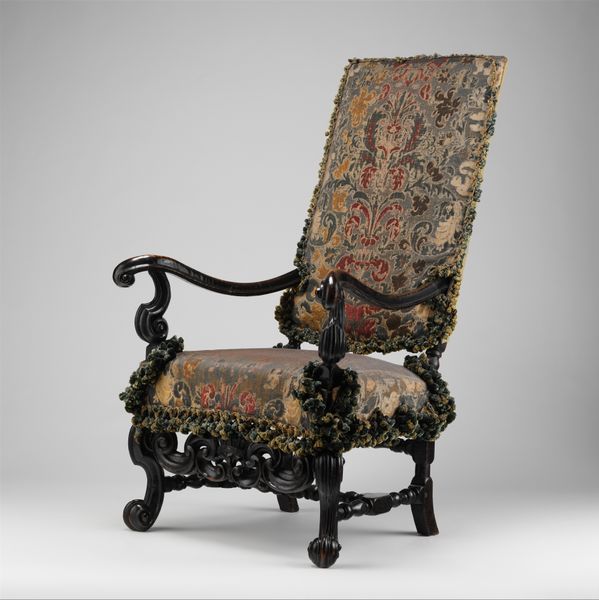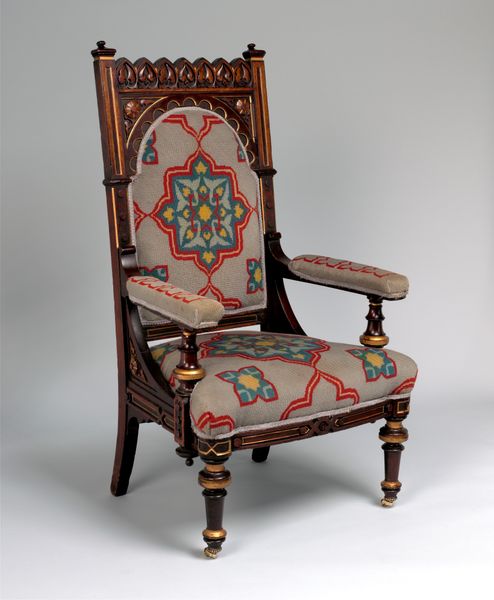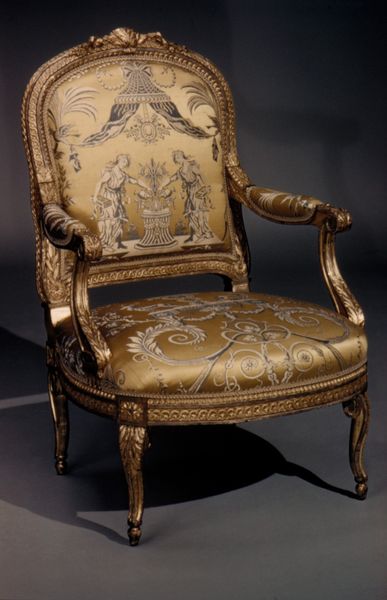
carving, textile, sculpture, wood
#
carving
#
narrative-art
#
furniture
#
textile
#
figuration
#
sculpture
#
wood
#
history-painting
#
decorative-art
#
rococo
Dimensions: Overall: 51 × 31 1/2 × 33 in. (129.5 × 80 × 83.8 cm)
Copyright: Public Domain
Curator: Good morning. Today, we're looking at a remarkable armchair from the mid-18th century, dating roughly 1750 to 1760, currently housed at the Metropolitan Museum of Art. It's attributed to the workshop of Thomas Chippendale. Editor: It's exuberantly decorative, isn't it? I’m immediately struck by how the rich, dark wood contrasts with the colorful textile depicting figures on the seat and back. There is so much happening. Curator: Indeed. Chippendale's influence on English furniture is undeniable; we observe in this chair the combination of Rococo styles and nascent Neoclassical influences that defined upper-class taste and domestic environments during that era. Materials included intricately carved wood and carefully chosen textiles. Editor: And when we really examine it, beyond its surface-level Rococo flamboyance, we begin to see deeper narratives taking shape through its ornamentation, suggesting the intertwined political, gendered, and social constructs embedded within decorative objects, right? Curator: Precisely. This was a period of evolving social structures. The artistry in objects like these demonstrates not only taste but also cultural capital. Who has a chair like this? And how does it position them within their community? These objects played an important role in that conversation, both privately and in the public sphere. Editor: That elaborate textile panel depicting a narrative is crucial. The story, whether religious or mythological, informs and justifies the wealth and authority implied by owning such a lavish object, reinforcing power structures of the time. Consider the implications for the people who did not sit in such chairs! Curator: It’s also vital to contextualize its creation. Workshops such as Chippendale’s employed numerous artisans. These decorative pieces were often collaborative achievements rather than the work of a single person. How the labor for pieces like this occurred in the colonial context also matters to this art history. Editor: And so viewing it, we begin unpacking issues of gender, class, and representation from its design. Whose story does it tell, and perhaps more importantly, whose story does it silence? It is quite profound to unpack just one chair. Curator: Agreed, by examining the historical reception and modern interpretations of such pieces, we understand that artworks have social roles in reinforcing the visual vocabulary of a certain time, in this case mid-18th century elites. Editor: Yes, I appreciate understanding an artifact like this by examining power relations that echo throughout history and continue to the present. Curator: Thank you. Looking at a historical art object from that perspective gives a lot to consider.
Comments
No comments
Be the first to comment and join the conversation on the ultimate creative platform.
